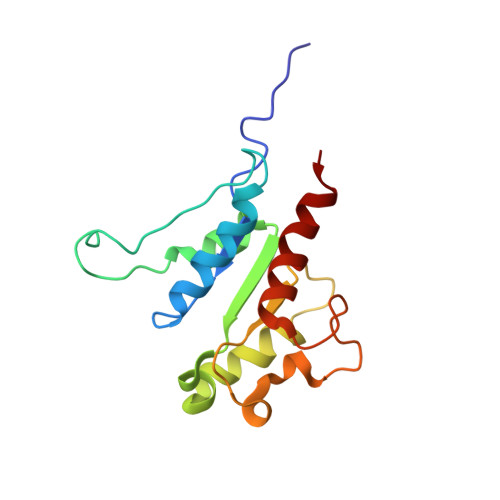o-Vanillin binds covalently to MAL/TIRAP Lys-210 but independently inhibits TLR2.
Rahaman, M.H., Thygesen, S.J., Maxwell, M.J., Kim, H., Mudai, P., Nanson, J.D., Jia, X., Vajjhala, P.R., Hedger, A., Vetter, I., Haselhorst, T., Robertson, A.A.B., Dymock, B., Ve, T., Mobli, M., Stacey, K.J., Kobe, B.(2024) J Enzyme Inhib Med Chem 39: 2313055-2313055
- PubMed: 38416868
- DOI: https://doi.org/10.1080/14756366.2024.2313055
- Primary Citation of Related Structures:
8JZM - PubMed Abstract:
Toll-like receptor (TLR) innate immunity signalling protects against pathogens, but excessive or prolonged signalling contributes to a range of inflammatory conditions. Structural information on the TLR cytoplasmic TIR (Toll/interleukin-1 receptor) domains and the downstream adaptor proteins can help us develop inhibitors targeting this pathway. The small molecule o-vanillin has previously been reported as an inhibitor of TLR2 signalling. To study its mechanism of action, we tested its binding to the TIR domain of the TLR adaptor MAL/TIRAP (MAL TIR ). We show that o-vanillin binds to MAL TIR and inhibits its higher-order assembly in vitro . Using NMR approaches, we show that o-vanillin forms a covalent bond with lysine 210 of MAL. We confirm in mouse and human cells that o-vanillin inhibits TLR2 but not TLR4 signalling, independently of MAL, suggesting it may covalently modify TLR2 signalling complexes directly. Reactive aldehyde-containing small molecules such as o-vanillin may target multiple proteins in the cell.
Organizational Affiliation:
School of Chemistry and Molecular Biosciences, University of Queensland, Brisbane, Australia.


















